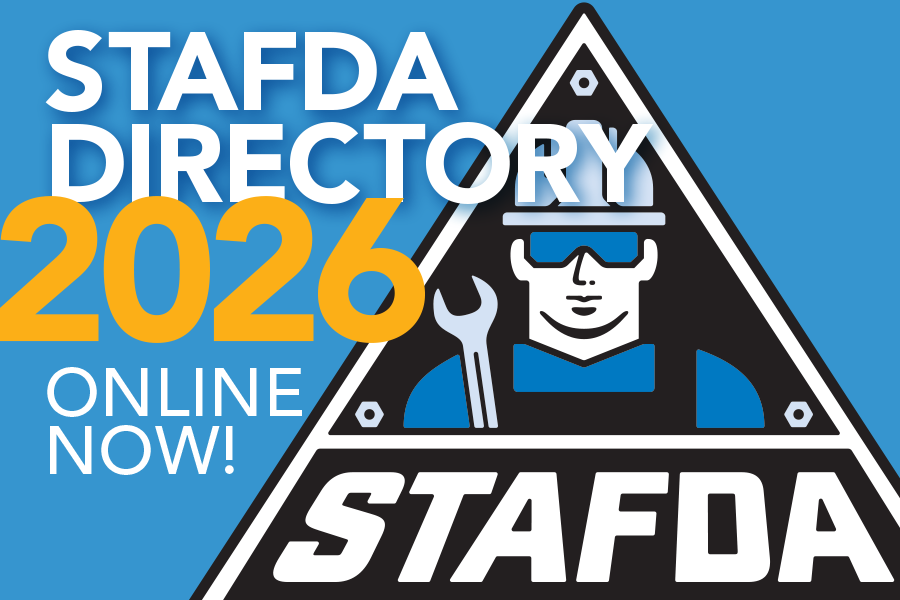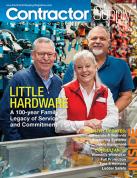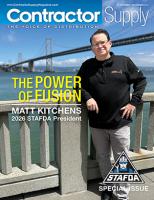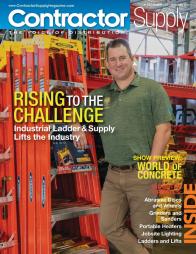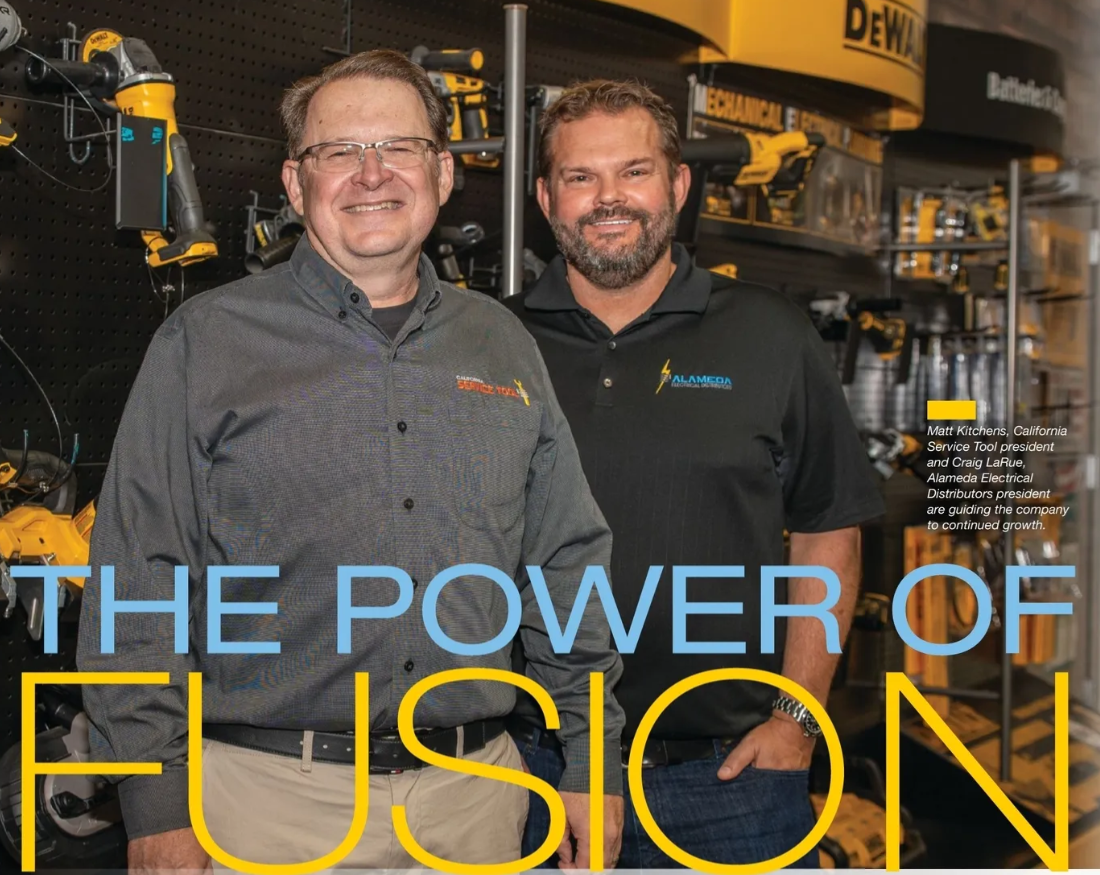 |
For more than 60 years, California Service Tool has been the premier distributor of tools, safety gear, and equipment for commercial trade contractors in Northern California. Headquartered in the San Francisco Bay Area, the company’s legacy is one of family, resilience, and reinvention.
At its heart, it is about people, visionaries who saw opportunity where others saw risk, leaders who have steered their teams through seismic changes, and employees who carry forward a culture of grit and service that has lasted for generations.
Matt Kitchens leads CST in conjunction with the remaining family connection, Craig LaRue, who oversees Alameda Electrical Distributors as president. Combined, the two independent companies form the foundation of what is collectively known as ALCAL Industries.
“We’re a little unique in that we’re running an electrical distributor and a tool and safety supplier with the same management team and back-end operations support, but then we go to market with two different sales teams,” Craig says.
He is the third generation of the family to lead the business. It was his great uncle, Don Eldridge, who began the legacy of what would be Alameda Electrical Distributors and California Service Tool.
With a service area for mechanical, electrical, plumbing, and interior contractors extended across Northern California and into Northern Nevada, CST currently has 14 branches, the majority of which run with employees from both CST and Alameda Electrical.
Combined, there are around 300 employees, of which only about 64 represent CST.
“We service what we stock, we kit materials, we prefab materials, and we offer multiple levels of VMI services,” Craig says. “We do a lot of services for our top customers.”
The roots of the company trace back to the 1950s, when Don, a Navy veteran looking for a new path after military service, entered the distribution business.
Don had an entrepreneurial spirit and a keen eye for people. In 1961, he founded California Service Tool, adding another chapter to his string of ventures. Don’s role as a founder was pivotal, but the company’s long-term success would come from how the family carried forward his vision.
By the mid-1970s, he was helping the next generation find its footing. He approached his nephew, and Craig’s father, Bob LaRue about starting a new business. At just 25, Bob had no money, but Don dismissed the obstacle and provided the needed capital, certain it would be repaid by profit. Bob and Don’s son Darrell, co-founded Alameda Electrical Distributors.
Fast forward to the 2000s, and the torch had passed to Bob’s son. Craig grew up in the family business, sweeping floors and pulling orders at Alameda Electric before eventually taking leadership.
In 2002, Craig moved to oversee CST, later returning focus to Alameda Electric in 2016. He continued guiding CST strategically while Matt Kitchens, whom he hired from Stanley Black and Decker, took over most of the daily operations.
“I’ve had a few people that I’ve talked to who have worked for manufacturers and went into distribution who said they wish they hadn’t done it,” Matt says. “It’s been the best thing I’ve ever done.”
When he first arrived, CST operated 10 branches that often felt like 10 separate companies. Employees described operations in starkly different ways; some claimed everything was fantastic, others that it was in ruins.
“Everybody just had a different view of what was broken and what wasn’t,” he says. “There were things that weren’t broken, but nobody ever communicated.”
Matt conducted a SWOT analysis that revealed a five-year overhaul ahead. The issues ranged from inconsistent sales meetings to the lack of basic marketing support.
“It was a mix of everything from just having standard sales meetings to a lack of basic marketing support,” he says.
At the time, CST’s marketing amounted to internal newsletters about new hires and pets. Salespeople scavenged for manufacturer sales sheets, clinging to them like gold, even if the products weren’t in stock.
Recognizing the void, Matt spearheaded the launch of The Source, a quarterly sales publication modeled after White Cap’s Contractor Trader. It featured CST’s elite vendors and gave the sales team professional tools to engage customers.
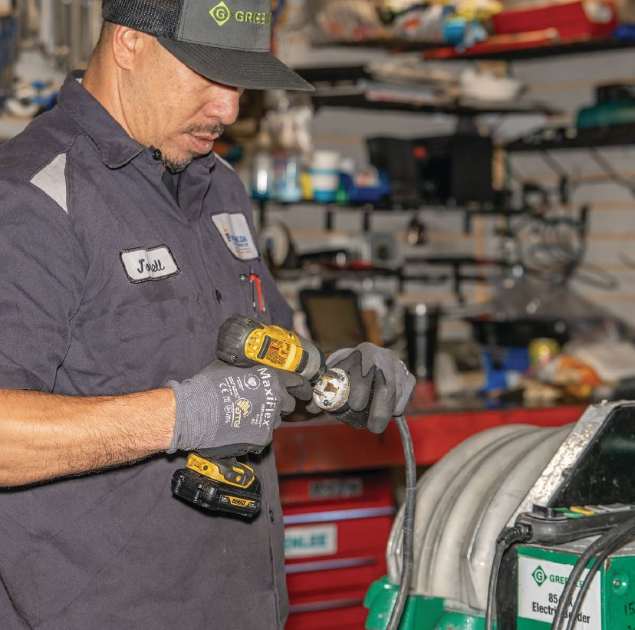 |
| Repair tech III Jorell S., replacing an end cap on a Greenlee 854DX bender is one of dozens of CST employees who strive to offer exceptional service. PHOTO: BEN SOLATI |
FACING HARD TRUTHS
When the COVID-19 pandemic struck, CST’s ability to adapt was tested. Leveraging Matt’s power tool connections, they boosted inventory by up to 30%, especially in battery-powered tools. This stockpile proved critical as supply chains buckled.
Still, lockdowns in California strained operations, forcing CST to prioritize service to its most engaged customers.
“That’s when we kind of refocused our efforts to where our best customers are going to get our best service, as far as priorities on delivery times, rentals, repair, safety trainings, etc.,” Craig says. “If they were supporting us in all those buckets, then this is a relationship that we can add value to. It’s not always about dollar volume; it’s more a percentage of participation.”
However, based on available data, preliminary prioritization was not going to be easy. The CST warehouse staff had no knowledge of who the top customers were. When orders came through, they grabbed the print outs and then pulled, packed, and loaded the product out for delivery.
Out of necessity came innovation. Together, Craig, Matt and Ryan Hernbroth, vice president of marketing, focused on creating processes that emphasized efficiency, transparency, and true partnership.
Their efforts led to CST developing the Fusion Partnership program, which categorizes customers into three tiers: Elite, Core, and Base. The program clarified CST’s identity as more important to the right people.
“There are always opportunities,” Craig says. “We needed to be more important to the right people and really look at how we separate some of our services and who we’re going to align ourselves with.”
This structured approach aligned services with customer commitment. Elite customers received faster deliveries, rental discounts, repair priority, and deeper engagement, while less active customers were serviced appropriately but without the same benefits.
Repair services, for example, once treated as break-even, became strategically tied to the Fusion program. CST would only repair tools purchased through them or by customers in the program.
“We’re probably the only distributor really left in Northern California that really does repair,” Craig says. “When someone asks why it is taking so long, we tell them it’s because another customer takes priority because they participate in the Fusion program.”
As a result, CST became indispensable to fewer customers, but those customers grew their share of wallet with CST significantly.
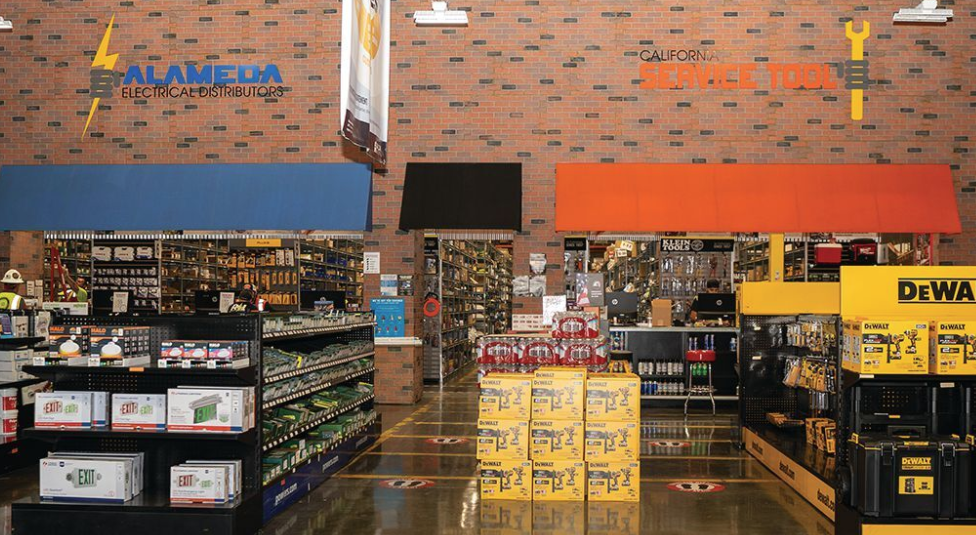 |
SYSTEMS OVER SILOS
Fusion also transformed internal operations. No longer would service hinge on one salesperson’s relationship.
“Partnership is number one, meaning that my team and I have the ability to go and meet with the right people who can actually make the change and make decisions,” Matt says. “When I first got here, a lot of people just had relationships with that first guy in the warehouse, so if that guy moved on and a new guy came in from another company that was dealing with somebody else, we would lose the business.”
Under the Fusion mindset, it was imperative for CST to have multiple contacts throughout their customer’s team.
“We need to get as deep as we can with the accounts so that when someone leaves, it doesn’t impact our business with them,” he says.
Instead, CST built layered touch-points, from executives like Craig and Matt down to customer support specialists making jobsite runs. This team-based model ensured continuity even if individuals left or transferred.
“My goal is for Matt, Ryan or me to be involved in pretty much every one of our main accounts on a very C-suite kind of level or even down to a project manager level, in some cases,” Craig says.
The customer filter flows from Matt to a regional or strategic account manager, to the customer support specialists. The final touchpoint is the inside salesperson dedicated to that customer, who is now more readily available to hunt down those unique product requests with the bulk of orders coming online.
To date, CST has had good luck even when team members transfer from one branch to another, and customers express concern.
“We tell them, it’s OK, just relax, we’ve got a system and the next time we see them, they’re singing the praises of the new guy,” Craig says.
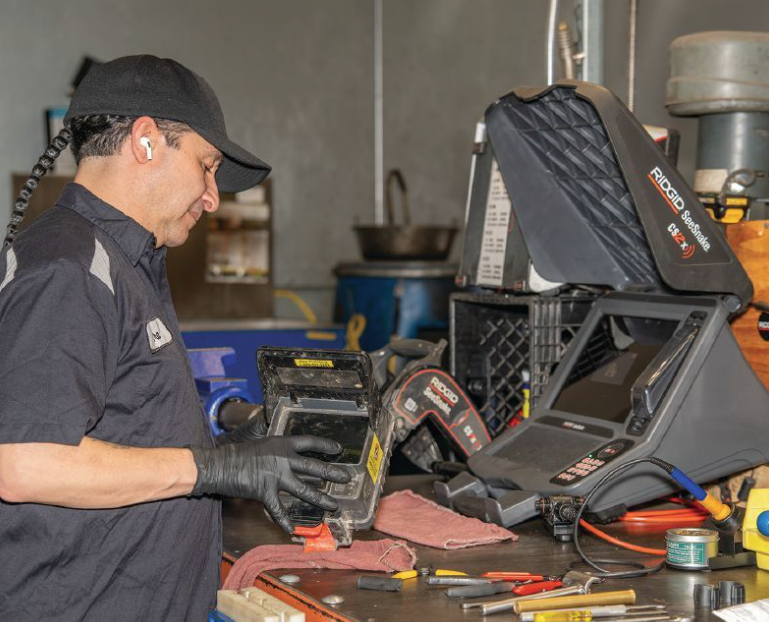 |
| California Service Tool is a factory-authorized service center for nearly all the tools and equipment it sells. Here, repair tech II Ira H. tests RIDGID SeeSnake CS6x recording monitor. PHOTO: BEN SOLATI |
GOING DIGITAL
On the technological side, CST made another bold move: Ryan built its B2B web portal in-house.
Expanding into digital tools revealed deeper flaws: poor data collection and inconsistent pricing.
“None of these are good or good trades at the end of the day for the customer,” Craig says. “We had to fix a lot of that stuff.”
At the time, many website development companies were offering to build interfaces that would supposedly balance both B2B and B2C sales models.
“B2B is such a different world, so it’s going to do both badly,” Craig says.
Several off-the-shelf solutions that poorly managed the B2B and B2C balance were rejected.
“We ended up scrapping the program and went and hired our own programmers to build everything from the ground up,” Matt says. “We are 100% in-house, which is extremely unique in this industry.”
The result was a transparent portal that allows customers to view their entire transaction history, analyze purchases, and make better decisions.
“We had to clean up our backend data to get it to a place where we could be more transparent,” Craig says. “We really had to change our perspective.”
Internally, there was hesitancy about customers having all that information about their transactions.
“We had to recognize that giving customers full access wasn’t a threat; it was a partnership,” he says. “If they can run their business better, that helps us too.”
As part of the dynamic shift, CST also introduced a single, fair-market price file, monitored quarterly.
“We want people to buy online, and they get incentives for that, but also, when we look at efficiency, we want set pricing,” Craig says. Transparent pricing built trust while streamlining inventory management.
RELATIONSHIPS
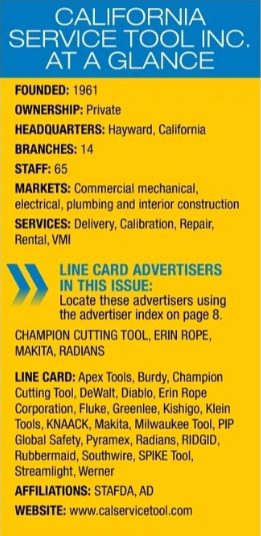 |
The Fusion program extends beyond customers to vendors and manufacturers.
Each year, Matt and his sales team name five or six Fusion vendors to invest deeply through a similar participatory system with the customers. For example, those involved with buying groups or associations like AD or STAFDA are quickly elevated to at least the core level.
Vendors highlighted in the Fusion program have their products featured on the website and in The Source, have access to Matt and his sales team, and are involved in the CST sales meetings.
“We have a kickoff every year at the beginning of the year to determine who the top five or six Fusion vendors we’re going to really invest in for the year,” Matt says.
To further benefit its Elite vendors and customers, instead of offering endless options, CST strategically consolidates its product lines, focusing on the most impactful brands and models.
For most distributors, if they’re selling yellow, red, and blue gloves, neither their vendors nor customers are concerned.
Matt says CST takes the approach of narrowing that down to brands and styles that are most-often purchased.
“We’re saying, hey, we just want to sell yellow and blue style gloves because only two Base customers buy the red ones,” he says.
Few distributors sit down with a vendor or manufacturer and say, “I’m going to consolidate my business, and I need to do what with you.” CST views its vendors as essential to be a strategic partner with rather than just another sales channel.
“It takes work, but in the long term, from an efficiency and an inventory perspective, it all lines up in the end,” Matt says. “It makes the sales guys work harder, not that they don’t work hard, but it makes them more strategic on getting their customers to hit these buckets. It’s not always just about selling more, it’s all about making us stickier.”
From a service perspective, CST offers far more than just discounts for participation in the Fusion program. Customers use them for a variety of services, including tool repair, rentals, or employee engagement activities like having a food truck sent out to a jobsite or renting out a sports skybox.
“Even if we don’t think we can get more business, if they’re a good customer, and they’re at this level, we should have at least one activity a year we’re driving with that customer to better our relationship with them,” Craig says.
The goal is to strengthen relationships, not just offer transactional rebates. Craig and Matt emphasize that CST isn’t just a supplier; it’s a resource for boosting labor efficiency, safety, and productivity.
“At the end of the day, I don’t think a lot of our customers really think about their supply chain,” Craig says. “There are so many problems on a jobsite. It’s about trying to change that narrative.”
Matt and Craig are more interested in having a conversation with their customers and finding out how they can be more beneficial.
“We’re really trying to make sure we’re out there telling the story, especially about the spend and how we affect their labor and how we can keep crews working efficiently, increasing productivity and safety,” Craig says. “We consider ourselves a resource so we want to know, how can we do better? Can we come to your pre-construction meeting, because that’s where we can have the biggest impact on their bottom line.”
When a contractor is mobilizing 200-300 people, the expectation is that CST can deliver supplies the next day.
“As long as we have the history and the communication about when their manpower is coming up, we can definitely perform to that level,” Craig says. “From there, it’s really taking all the ancillary stuff, when you look at how we keep their stuff in good working order to go out to the field with.”
BEYOND THE BAY
CST’s growth strategy is customer-driven. The recent opening of a branch in Sparks, Nevada, came at the urging of customers being driven by the construction of data centers.
“There’s still a lot of space in California,” Craig says, envisioning potential expansion into other markets, but always with customer demand as the catalyst.
In addition, he says a key aspect of continued growth is ensuring CST can stay ahead of industry consolidation and technological changes.
Continued involvement with industry- related buying groups like AD and STAFDA is also critical in creating and developing vendor relationships.
“If we go out to customers and tell them we’re looking for efficiency, and we’re looking at how we can make things smoother so we’re winning and losing together, that needs to transfer back to our manufacturers too,” he says.
Independent distributors and manufacturers are dwindling under the weight of private equity and venture capital. Craig and Matt field regular buyout offers but remain committed to independence.
“If I’m married, there’s no reason to go on a date with that lady over there,” Craig quips. “We’ve got the right team, and as long as we can affect change, we’re in this.”
This article originally appeared in the October/November 2025 issue of Contractor Supply magazine. Copyright 2025, Direct Business Media.
Cover story images: Ben Solati.





